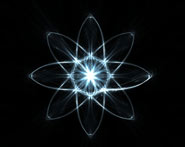


 الفيزياء الكلاسيكية
الفيزياء الكلاسيكية
 الكهربائية والمغناطيسية
الكهربائية والمغناطيسية
 علم البصريات
علم البصريات
 الفيزياء الحديثة
الفيزياء الحديثة
 النظرية النسبية
النظرية النسبية
 الفيزياء النووية
الفيزياء النووية
 فيزياء الحالة الصلبة
فيزياء الحالة الصلبة
 الليزر
الليزر
 علم الفلك
علم الفلك
 المجموعة الشمسية
المجموعة الشمسية
 الطاقة البديلة
الطاقة البديلة
 الفيزياء والعلوم الأخرى
الفيزياء والعلوم الأخرى
 مواضيع عامة في الفيزياء
مواضيع عامة في الفيزياء|
Read More
Date: 16-12-2015
Date: 23-12-2015
Date: 2-2-2017
|
Step One: White Dwarfs
The Sun is destined to be transformed into the first of the three superdense bodies created when a star dies, a white dwarf. Billions of years from now, our star will begin to run out of the hydrogen that fuels the nuclear reactions in its core. When most of the hydrogen is gone, the core will get both denser and hotter. This extra heat will cause the Sun’s outer layers to expand outward, transforming it into an enormous star hundreds of times bigger than it is now; in fact, its surface will engulf the orbits of Mercury and Venus, destroying those planets, and the surface of Earth (which will then be the innermost planet in the solar system) will be scorched as if in a blast furnace. However, because the Sun’s new surface will be stretched and more spread out than before, any given portion of it will be a bit cooler. So the star’s color will change from a hot yellow to a cooler red. For this reason such expanded, cooler stars are called red giants.
Eventually, the core of the red giant Sun will completely run out of hydrogen, at which point it will start burning the next heaviest element, helium. Of course, the helium will soon get used up, too, and in time the star will no longer burn fuel to produce nuclear reactions. At that point, the delicate balance that keeps the star stable will be undermined. The outward pressure of escaping energy will decrease, allowing it to be overcome by the inward pressure of gravity. “Gravitation has been waiting,” Asimov writes, “pulling patiently and tirelessly for many billions of years, and finally resistance to that pull has collapsed.”
As gravity takes over, the red giant Sun will start to shrink. Some of its outer material will escape into space. But most will remain inside the shrinking star, which, compelled by gravity’s mighty hand, will finally crush this matter into a white dwarf a small, hot, but only dimly luminous ball about the size of Earth. A white dwarf is so dense that a mere tablespoon of its material weighs a thousand tons. Thus it comes as no surprise that such a body possesses a very deep gravity well and therefore a powerful gravitational pull. To escape a white dwarf, a spaceship would need to reach a speed of about three thousand miles per second! (Of course, it would be foolhardy to land on a white dwarf in the first place, since its gravity would quickly crush the ship and its occupants into flattened deposits of debris).
Explosions on White Dwarfs
Once formed by stellar collapse, solitary white dwarfs slowly cool and fade from view. If they are part of binary (double-star) systems, however, white dwarfs can periodically produce explosions called novas, as explained here by University of Amherst astronomer Thomas T. Arny in his noted astronomy text Explorations.
If a white dwarf has a nearby companion, gas expelled from the companion may fall onto the dwarf. . . . Coming from the companion’s outer layers, such gas is rich in hydrogen and may briefly replenish the white dwarf’s fuel supply. The new fuel forms a layer on the white dwarf’s surface, where gravity compresses and heats it. The gas layer eventually reaches the ignition temperature for hydrogen, but . . . nuclear burning in a degenerate gas can be explosive. The detonating hydrogen is blasted into space and forms an expanding shell of hot gas . . . that radiates far more energy than the white dwarf itself. Sometimes these stellar explosions are visible to the naked eye. When earlier astronomers saw such events, they called them novas, from the Latin word for “new,” because the explosion would make a bright point of light appear in the sky where no star was previously visible.




|
|
|
|
حمية العقل.. نظام صحي لإطالة شباب دماغك
|
|
|
|
|
|
|
إيرباص تكشف عن نموذج تجريبي من نصف طائرة ونصف هليكوبتر
|
|
|
|
|
|
حرصاً منها على تطوير المواهب القرآنية لشريحة البراعم .. العتبة العلوية المقدسة ترعى برنامجاً تدريبياً للتلاوات الصحيحة
|
|
|
|
على مساحة 765 متراً مربعاً .. العتبة العلوية المقدسة تكمل بناء روضة أحباب الأمير (عليه السلام)
|
|
|
|
دعماً منها لدور المكتبات في ظل التطور الرقمي العالمي .. العتبة العلوية المقدسة تقيم ورشاً في بناء المكتبات الرقمية
|
|
|
|
العتبة العلوية المقدسة تتزين بآلاف الورود الطبيعية احتفاءً بذكرى ولادة الإمام الرضا (عليه السلام)
|